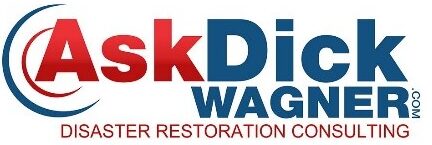These ideas may be obscure but they can be powerful.
Route marketing is about more than repetition and visibility — it’s about quality. Yet many route marketers fall into a pattern of drive-by check-ins and surface-level interactions, never fully tapping into the deeper psychology of trust. The usual advice — be consistent, show up on time, smile — only scratches the surface. To truly stand out, marketers need to apply lesser-known trust-building techniques that work below the radar of traditional sales training.
 People remember you when you break patterns — but gently. Instead of always showing up at 10 a.m. with donuts, try showing up at 2 p.m. with popsicles on a really hot day. Say something unexpected but kind, like “I figured these could help everyone cool off on this hot day.” This subtle shift creates curiosity and signals thoughtfulness. The principle at work here is “caring disruption”: you deviate from expectations in a way that makes people feel seen, not startled.
People remember you when you break patterns — but gently. Instead of always showing up at 10 a.m. with donuts, try showing up at 2 p.m. with popsicles on a really hot day. Say something unexpected but kind, like “I figured these could help everyone cool off on this hot day.” This subtle shift creates curiosity and signals thoughtfulness. The principle at work here is “caring disruption”: you deviate from expectations in a way that makes people feel seen, not startled.
It’s about reciprocity not manipulation. Offer something small and personalized without expecting anything back: a niche tool suggestion, a printed article that addresses one of their pain points, (we call these Maven Articles) and they are on this website. Even a laminated checklist specific to their role. When the gesture is uniquely useful, it plants a seed of goodwill. The prospect may not need your services today, but you’ve earned mental real estate that competitors haven’t.
Instead of always presenting as the expert, try sharing a small, non-critical personal learning moment — a story about when you misunderstood a client’s need and what it taught you. This makes you human. Selective vulnerability communicates humility and reflection, which builds credibility far faster than polished sales pitches. Prospects begin to see you as authentic, not transactional. This type of vulnerability adds to your believability and can give them a warm spot in their heart for you.
Route marketers often miss the social dynamics happening within a prospect’s workspace. Look for the “third places” — the non-work spaces where employees gather: a corner coffee shop, a favorite local lunch spot, or even a bench outside. Engage there. Sharing a quick comment while waiting for coffee or referencing a funny sign in their breakroom earns you relational context. You’re no longer just a vendor; you’re part of their ecosystem. Try connecting at a local networking meeting – like a Chamber event is also a non-threatening, more relaxed way to engage.
where employees gather: a corner coffee shop, a favorite local lunch spot, or even a bench outside. Engage there. Sharing a quick comment while waiting for coffee or referencing a funny sign in their breakroom earns you relational context. You’re no longer just a vendor; you’re part of their ecosystem. Try connecting at a local networking meeting – like a Chamber event is also a non-threatening, more relaxed way to engage.
Instead of just dropping off business cards, observe patterns: who’s always fixing things? Who’s always on the phone? Who always has a customer at their desk? Who do others defer to? Who looks like they’re overburdened? Then ask questions that show you’ve noticed. For example: “I see you handle a lot around here — if a policyholder called over the weekend would it fall on you to facilitate getting them back to normal?” This subtle empathy builds trust because people crave being seen in their reality, not just targeted as a lead.
Purposefully “forgetting” something and returning a day later gives you a non-pushy reason to re-engage. This may sounds counterintuitive, but it’s a soft way to have another “touch” or be top-of-mind. “I think I left my route book here yesterday. Did you see it anywhere?” Over time, these return visits accumulate into familiarity without pressure. Familiarity is a cousin of trust. You can’t do it with the same person very often, otherwise they may think you’re a dingbat.
Building trust on a route isn’t about pitching harder — it’s about listening better, observing more closely, and offering value before asking for anything in return. By weaving these less obvious strategies into your routine, you’ll become the marketer who isn’t just remembered — you’re trusted, and that’s far more powerful.

Nationally recognized coach, consultant, trainer, and speaker
Creator of the renowned PREP™ pre-disaster program
Co-owner of The CREST Network, LLC
Copyright© 2025 AskDickWagner, LLC All Rights Reserved
No Part Of This Document May Be Reproduced In Any Form Without Written Permission
